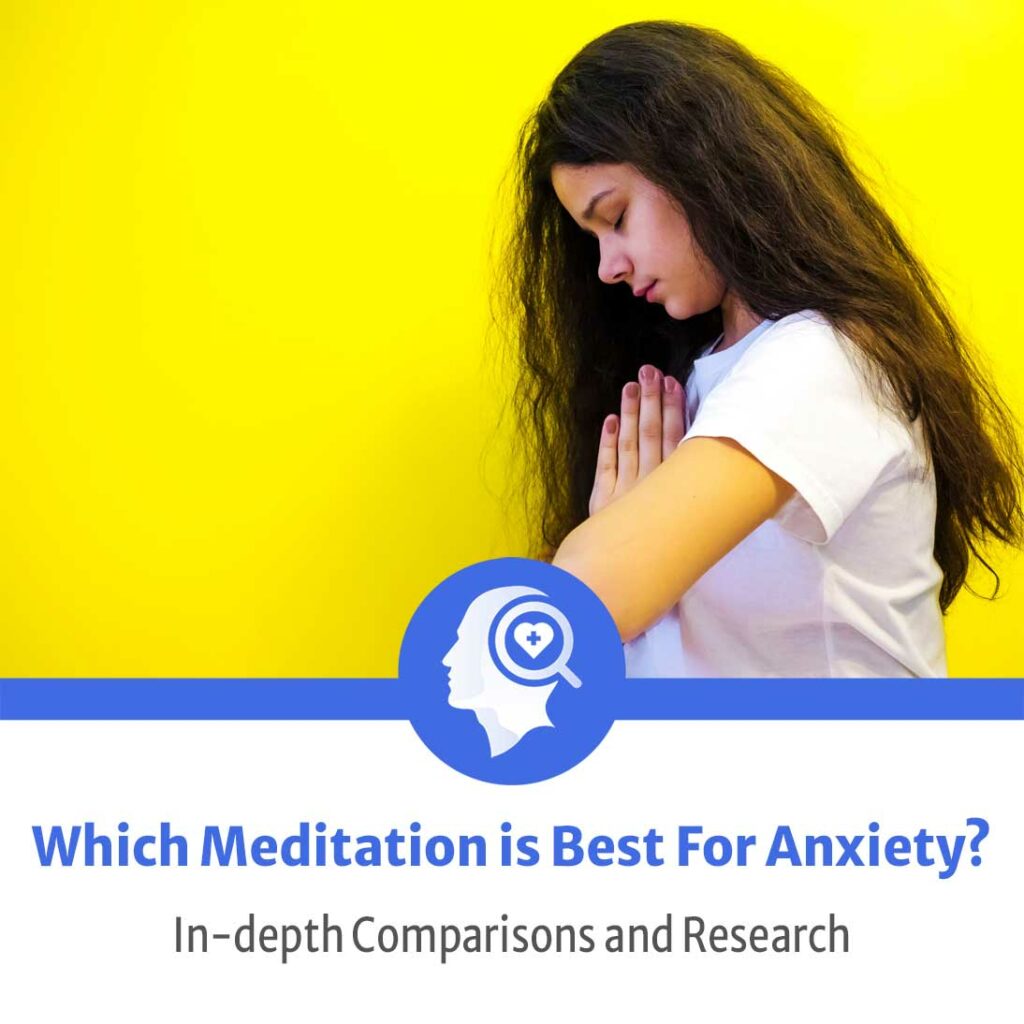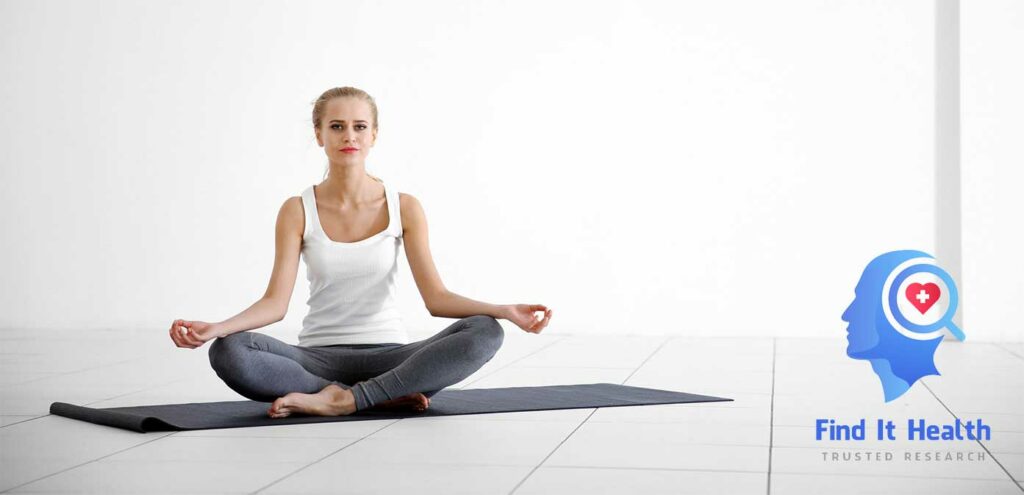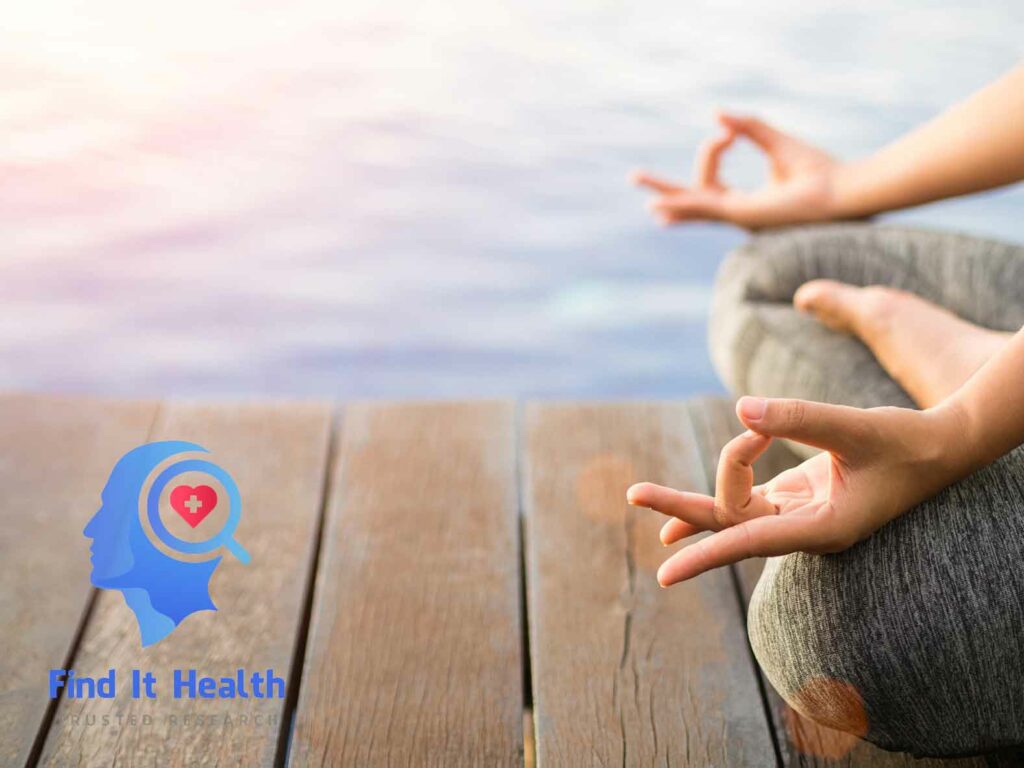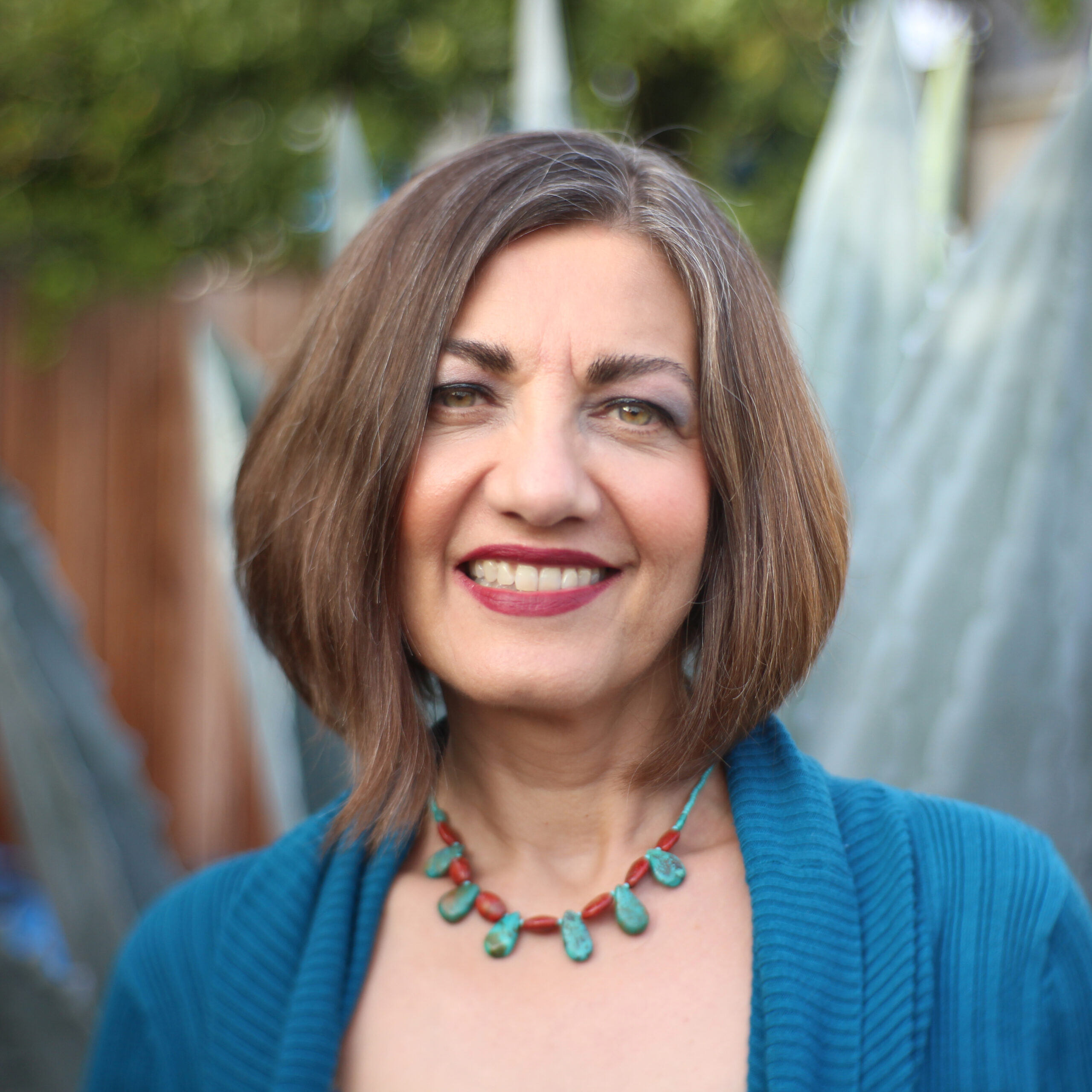
We are exploring the best meditation for anxiety and other tips about reducing anxiety.
Anxiety means your body is experiencing too much stress at once and it largely impacts your mental health. Many people will experience anxiety at some point in their lives. It’s a normal response to events like moving, and financial problems though anxiety could also be triggered by a traumatic event or even triggered by emotions and feelings.
Research from our team at FinditHealth found that meditation can help reduce anxiety symptoms, helping you feel more at ease. Keep reading to find the best meditation for anxiety and other tips about meditation to improve your well-being.

A Mindfulness Meditation For Anxiety



Research from The American Journal of Psychiatry has shown that using a meditation-based stress reduction program is highly effective in treating anxiety disorders. MBSR was first created by Jon Kabat-Zinn in 1979 at the Stress Reduction Clinic at the University of Massachusetts Medical School. According to their website, “Mindfulness-Based Stress Reduction (MBSR) therapy is a type of therapy based on meditation principles. It was originally developed to reduce stress levels in its participants but has evolved into a complete program of exercises designed to enhance and contribute to overall well-being.” It’s a modern, scientific-based perspective to traditional Buddhist principles of mindfulness and meditation.
Mindfulness is the first step towards meditation.
When combined, these practices may help reduce anxiety because they enable you to reduce worry and be aware of your thoughts and feelings in the present moment without being fearful. This is why mindfulness-based meditation is the best meditation for anxiety.
Mindfulness meditation is an example of an exercise to strengthen our self-awareness with a non-judgemental mind. We learn to let go of negativity, relax the body, calm the mind, and be in the present moment. By feeling the breath and being aware of our senses, we fully ground ourselves and open to the present moment. This allows us to acknowledge and accept our thoughts, feelings, and any physical sensations that arise.
Below, you will find a mindfulness meditation for anxiety that can be done however long you need it to be. You can practice this in a seated position or lying down. Choose which position feels best for you.
- Begin with checking in with your body. Acknowledge how the physical body feels and where the mental mind is wandering. Be aware of whatever you think and things around you, and let it be. There is nothing wrong or needs to be fixed; the only thing you should focus on is being present.
- Shift your attention to your breath. Focus on the inhales and exhales, and anytime the mind wanders, bring your attention back to the breath.
- Reflect on a specific, recent experience of anxiety. Now recall the incident in vivid detail and bring that anxiety into the present moment. As you relive the experience, be mindful of how the tension feels in your physical body. Embrace the sensations and acknowledge whatever physical feelings you’re experiencing in your body and let them be. Now feel into any emotions that arose when the anxiety came and let them be.
- Sit with and continue to acknowledge your physical sensations and emotions. You might notice memories, thoughts, and feelings surface and see more clearly into factors that have driven you into anxiety.
- Now transition back to the breath. You are focusing on deep inhalations and exhalations. Begin to sense your heart and open it with self-compassion. Trust that anxiety can become your teacher. It helps to open your heart to greater wisdom, compassion, and overall ease with life. Congratulate yourself on taking the time to do this meditation and heal your anxiety. Slowly, open your eyes and return to the present moment.
How To Meditate & The Benefits



Meditation is the practice of clearing your mind to expand into your unconscious mind. There are different types of meditations you can do to practice. Some will focus on a sound, like öoooomm, others will focus on breathing, as we learned in the meditation earlier in this article.
Some meditations involve repeating a mantra, and others nothing at all. The central aspect of these meditation techniques is that the mind clears and becomes blank with no thoughts. Generally, it is best to leave five to twenty minutes to meditate. While meditation can be any length, longer meditation sessions bring more significant benefits.
Still, it is usually best to start slowly to maintain the practice long-term. We advise beginning with 10 minutes and then adding 5 minutes each week. You can sit in a cross-legged seat or lay down for your meditation. Another addition to a meditation practice is adding a meditation journal. Journaling can be an essential component to make your meditation practice better.
In meditation, you are clearing your mind to look into your unconscious mind, and many feelings and emotions can arise. A meditation journal can be a place to write down these thoughts and process the feelings that arose. This can be a wonderful tool to use in your mindfulness meditation for anxiety.
Spirituality for Your Health

Spirituality means different things to different people and can be a broad topic. Typically, it involves searching for meaning in life and finding a sense of connection to something bigger than ourselves. It is a universal human experience and something that profoundly influences us all.
For some, it’s primarily about a belief in a higher power and active participation in organized religion. This can be associated with a church, temple, mosque, or synagogue. For others, it’s about non-religious experiences that help them get in touch with their spiritual selves through quiet reflection, time in nature, private prayer, yoga, or meditation.
Having a regular mindfulness meditation practice can deepen your sense of purpose and definition of spirituality. Like your sense of purpose, your definition of spirituality could change throughout your life. Life is full of experiences and relationships, and these events change and adapt to us and our views.
Frequently Asked Questions on Stressors


What type of meditation is good for anxiety?
Any meditation will assist with anxiety, but mindfulness meditation is the best because of the specific way it impacts the brain. Mindfulness meditation is the practice of clearing and bringing your mind and body to a standstill. The goal is to keep your mind clear and focused with no thoughts or feelings. This allows you to get deeper into your consciousness to find the root cause of your anxiety.
Can meditation cure anxiety?
Yes, meditation is one of the best ways to reduce anxiety. It changes the function and structure of your brain and reprograms your brain to be less anxious.
What is the most effective meditation technique?
The most effective technique is concentration meditations that focus on the breath. By concentrating on the breath, you turn your mind off from distractions like thoughts and emotions. Anytime you get distracted, you return to the breath. It can be tricky initially, but it is still the most effective meditation technique available today.
What is the 3 3 3 rule for anxiety?
The 3 3 3 rule is a simple technique to reduce stress and anxiety. It works by engaging the three senses – sight, sound, touch – to distract and clear your mind so you can calm your anxiety in the moment. We often are not always in places where we can sit down and meditate, and the 3 3 3 rule can be done anywhere and in five minutes.
Sight
Take a deep inhalation followed by a deep exhalation, and then look around you. Bring your awareness to three physical objects that are closest to you. Please pay attention to details as you look at the items and name them. Notice and remember details such as colors, design, temperature, and textures.
Sound
Next, listen to three sounds and name them.
Touch
The last thing you will do is awaken your sense of touch. Choose three body parts you can move. For example, wiggle your fingers, rotate your wrists, and move your legs.
How long before meditation helps anxiety?
By adding mindfulness meditation into your daily routine, you should notice changes gradually and consistently over time.
Conclusion – Research by Findithealth.com


Living with anxiety or constant stress is not easy. Still, there are many natural ways to help, as researched by the team at FindItHealth.
Managing anxiety and panic can be easy with a daily meditation practice.
Adding things to your self-care routine can also help. In addition to using a mindfulness meditation for anxiety, cupping therapies and massages are also beautiful ways to calm anxiety and go nicely with a meditation practice. By implementing these above tips, you can begin to reduce your anxiety and live a happier, stress-free life.

